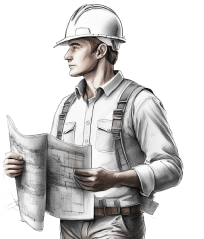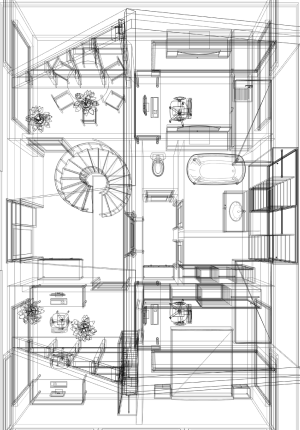Air Pressure, Leaks, and Why We Need to Resolve It
Ever been worried when the doors suddenly magically open by themselves? Do you hear sudden and random whistling and odd noises? Or do you feel random drafts of air? If you have watched too much horror movies, most probably you have wondered if a poltergeist has invaded your home. You have two ways to solve this. You can choose to call two people: the ghostbusters or the HVAC experts. This blog will tell you why you should opt the latter.
Believe it or not, these unexplained events may have been caused by an air pressure imbalance which are actually rooted in our HVAC system. The main question you can ask yourself so you can check for a probable unbalanced HVAC pressure in your home is: “How leaky is your house?”
Unbalanced Pressure
When it comes to leakiness, it simply means that the property is not properly sealed. There are gaps, leaks, or entry points – even the smallest cracks, which allows heat or humidity penetration. Depending on how leaky the house is, the air pressure inside the space is either too high or too low compared to the space outside. The difference in the air pressures is causing cold air to be sucked in when you want a heated home, or it forces warm air out of the property when you want a little bit of heat. That is why when you open the door, your face is met with a strong rush of air; or when a small crack in the window can close the door of the room effortlessly.
While the consequences of unbalanced air pressure are not urgent and dire, the prevention and/or early detection of such leaks will have your household, electric bill, and HVAC equipment thank you in the future.
Here are sample scenarios that creates a leaky house, which eventually leads to further damage of your home:
– Exhaust fans in kitchens with no fit backdraft dampers. These dampers are important to seal and block off air from coming in or out the room while the exhaust fans are not in use. Without a fit damper, possible scenarios include backdrafting of cooking appliances leading to toxic carbon monoxide build-up in the room.
– Ductworks with leaks or gaps can negatively affect the expected air pressure which comes from the air handler. Air may escape through the cracks of the ductwork before it reaches the vents, which lessens the expected air in the house or the transfer of humid or contaminated air from the attic (where ductworks are usually located) to the rest of the house.
– Heavy-duty kitchen exhaust fans that are used at full capacity can cause too much air to be pulled to the outside of the house. This is made worse by the usual practice of using their HVAC system to compensate the unbalanced pressure, which can cause a massively oversized HVAC.
– Because of the law of convection, the hot air rises to the upper floors and this results in negative pressure in the lower floors. This can also be furthered by combustion appliances like fireplaces which may expel too much air out.
The goal is to actually achieve a slightly positive air pressure in the home. This can help in pushing out the contaminants in our home like dust or allergens, and to stop the continuous negative pressure in the house.
Duct Leakage Test
One possible solution is the installment of advanced devices that enables air balance and makes sure inside air is how we want it. Energy recovery ventilation treats the incoming outdoor ventilation air, whether by pre-cooling and de-humidifying the intake air during warmer seasons or humidifying and pre-heating incoming air during cooler seasons.
A less costly and sustainable alternative involves detective works by HVAC experts. It can begin with a visual examination of the home, then a correction or controlling of the flow of air can be effectively provided by your trusted and well-equipped HVAC company. Some measures include duct repairs, fan motor adjustments, or a more efficient HVAC design to ensure your unit is adequate for your space.
This can definitely give you the peace of mind that no spooky devil is in your house and all it takes is a load calculation.
Feel free to watch this short video on YouTube entitled Positive and Negative Pressure In Your Home. There is a visual explanation which can help you better understand the concept. If you have any questions or want to talk about possible solutions for your home, send us an email at tom@procalcs.net.


